The 2025 guide to Electrical Wiring Colours in the UK - Electrical Faults Fixed
Electrical wiring colours are vital safety aspect within any electrical system, ensuring the safe operation of circuits, appliances, and connections in homes, businesses, and industrial settings.
Table of Contents
- The Importance of Electrical Wiring Colours
- Old Wiring Colours in the UK
- New Wiring Colours in the UK
- Wiring Colours in the USA
- Old Cable Types: VIR and Lead-Sheathed Cables
- Wiring Regulations and Safety
- International Wiring Standards
- Identifying Different Wires
- Wiring Colour Standards and New Installations
- Electrical Appliances and Connected Homes
- Significant Risks with Old Wires
- European Cable Colours vs. US Standards
- Wiring Systems and Consumer Units
- Conclusion
As a qualified electrician and electrical lecturer, I have witnessed the evolution of wiring standards and encountered both modern and outdated wiring systems. In this article, we will look at the history, significance, and safety aspects of electrical wire colours in the UK and USA, discussing old and new wiring colours, cable types, and regulations to provide a comprehensive guide.
Back to top1) The Importance of Electrical Wiring Colours
Wiring colours play a pivotal role in electrical safety and functionality. Proper identification of conductors reduces the risk of electric shocks, fire hazards, and incorrect connections. Wiring regulations and standards differ between countries, but they share the goal of providing clear guidance for safe installations and maintenance.
Back to top2) Old Wiring Colours in the UK
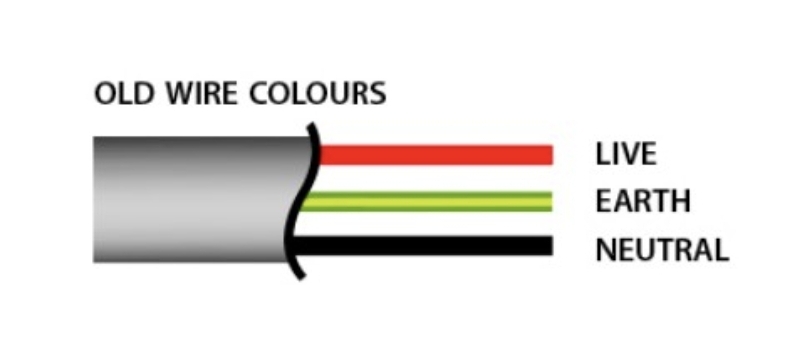
Older installations in the United Kingdom often used colours that have since been replaced under updated wiring regulations. Prior to 2004, the UK adhered to a specific wiring colour code:
- Red for the live wire (or line conductor)
- Black for the neutral conductor
- Green for the earth cable (protective conductor)
These colours were consistent in single-phase and three-phase wiring systems. However, aging systems with old wires, such as those made from Lead Sheathed cables or Vulcanised Indian Rubber (VIR), pose significant risks today. These materials were prone to deterioration, especially under excessive temperatures or exposure to direct sunlight.
Back to top3) New Wiring Colours in the UK
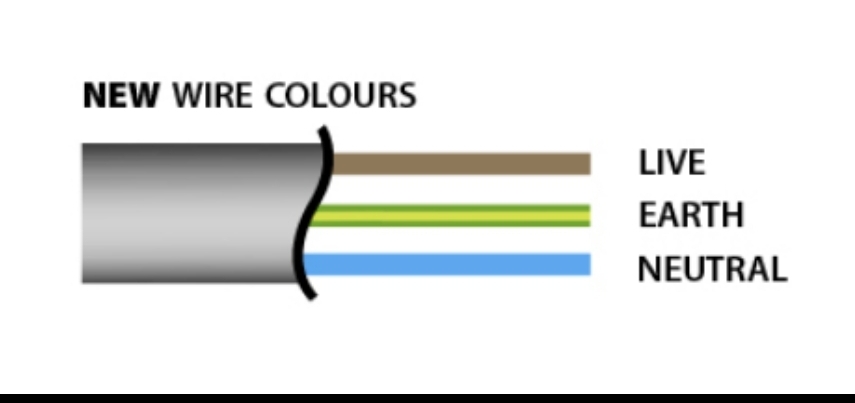
The harmonisation of wiring colour codes across European countries in 2004 introduced new standards in the UK to align with European cable colours. The new wiring colours for single-phase systems are:
- Brown for the live wire
- Blue for the neutral wire
- Green and yellow stripes for the earth cable
For three-phase wiring, the live wire colours became:
- Brown (L1)
- Black (L2)
- Grey (L3)
These changes were part of British Standard BS 7671, aimed at reducing confusion and improving safety, especially for electricians working internationally.
Back to top4) Wiring Colours in the USA
The United States follows the National Electrical Code (NEC), which specifies wiring colour standards that differ from the UK and Europe. Common wiring colours in the USA include:
- Black or red for live wires (hot wires)
- White for the neutral conductor
- Green or bare copper for the earth cable
These colours apply to single-phase and three-phase wiring systems. The NEC also mandates additional markings for high voltage and specific applications.
Back to top5) Old Cable Types: VIR and Lead-Sheathed Cables
Older installations in both the UK and USA often feature outdated cable types such as VIR and Lead Sheathed cables.
- VIR (Vulcanised Indian Rubber): These cables had rubber insulation that degraded over time, especially when exposed to direct sunlight or excessive temperatures. They are now considered unsafe and have been replaced with PVC-insulated sheathing in modern installations. The rubber will now be incredibly brittle and fall away from the wiring leaving dangerous exposed live parts.
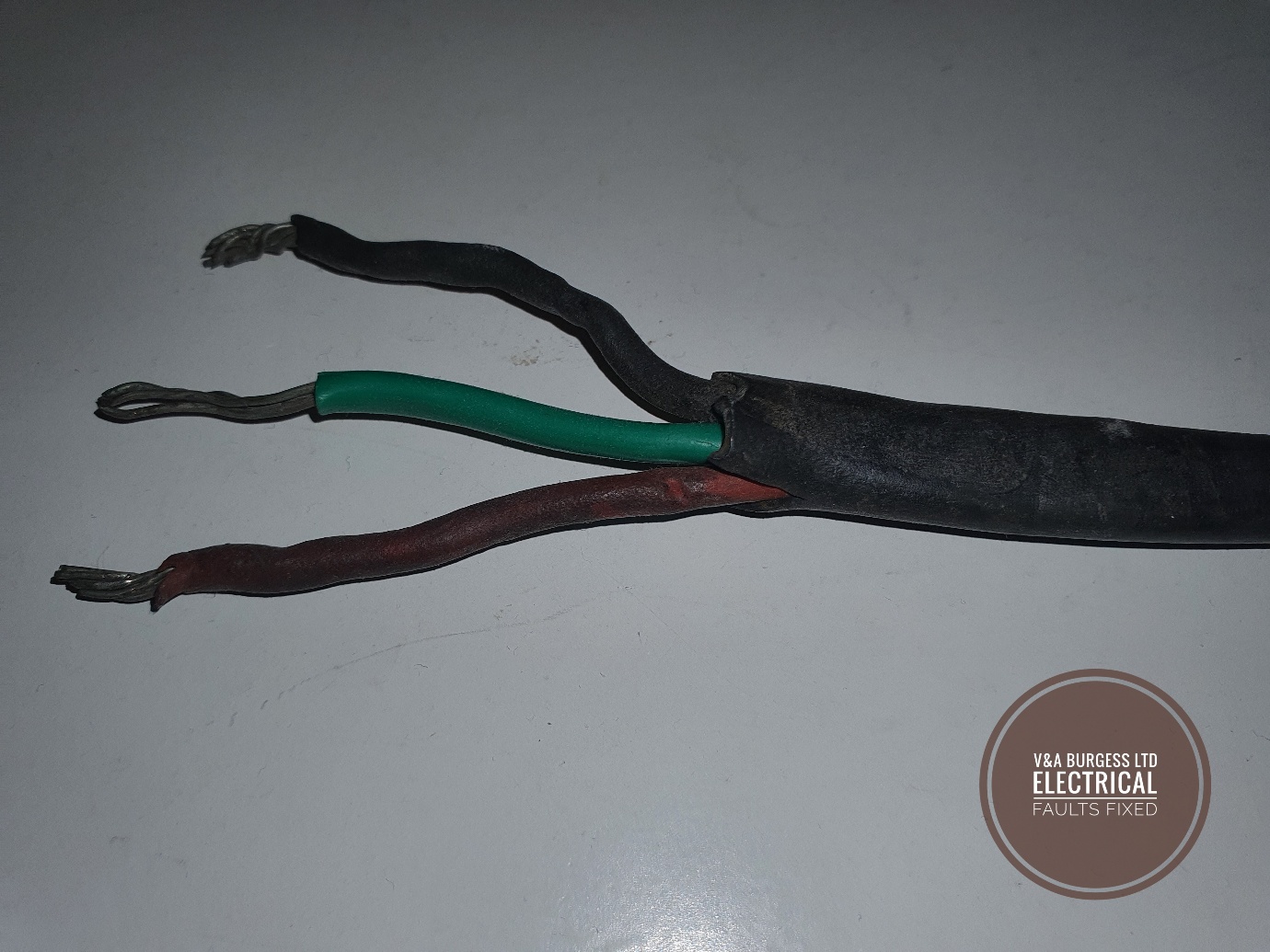
(PHOTO: Vulcanised Rubber Cable)
- Lead-Sheathed Cables: These were durable and provided protection against mechanical damage but are now obsolete due to health concerns associated with lead and advancements in cable materials.
6) Wiring Regulations and Safety
Modern wiring regulations prioritise safety, ensuring that all electrical work meets stringent standards. In the UK, the British Standard BS 7671, Building Regulations and PAT Testing (Portable Appliance Testing) guidelines require visual checks and inspections to confirm good working order and adherence to the latest standards.
Safety is further enhanced by components like circuit breakers and residual current devices (RCDs), which interrupt the electricity supply when faults occur. Ensuring correct wiring colour codes and conductor identification is vital to maintaining a safer home and workplace.
Back to top7) International Wiring Standards
The harmonisation of wiring colour standards across European countries has made it easier for electricians to work on international projects. The International Electrotechnical Commission (IEC) sets guidelines that many countries, including the UK, follow. However, significant differences remain between European standards and those used in the USA.
Back to top8) Identifying Different Wires
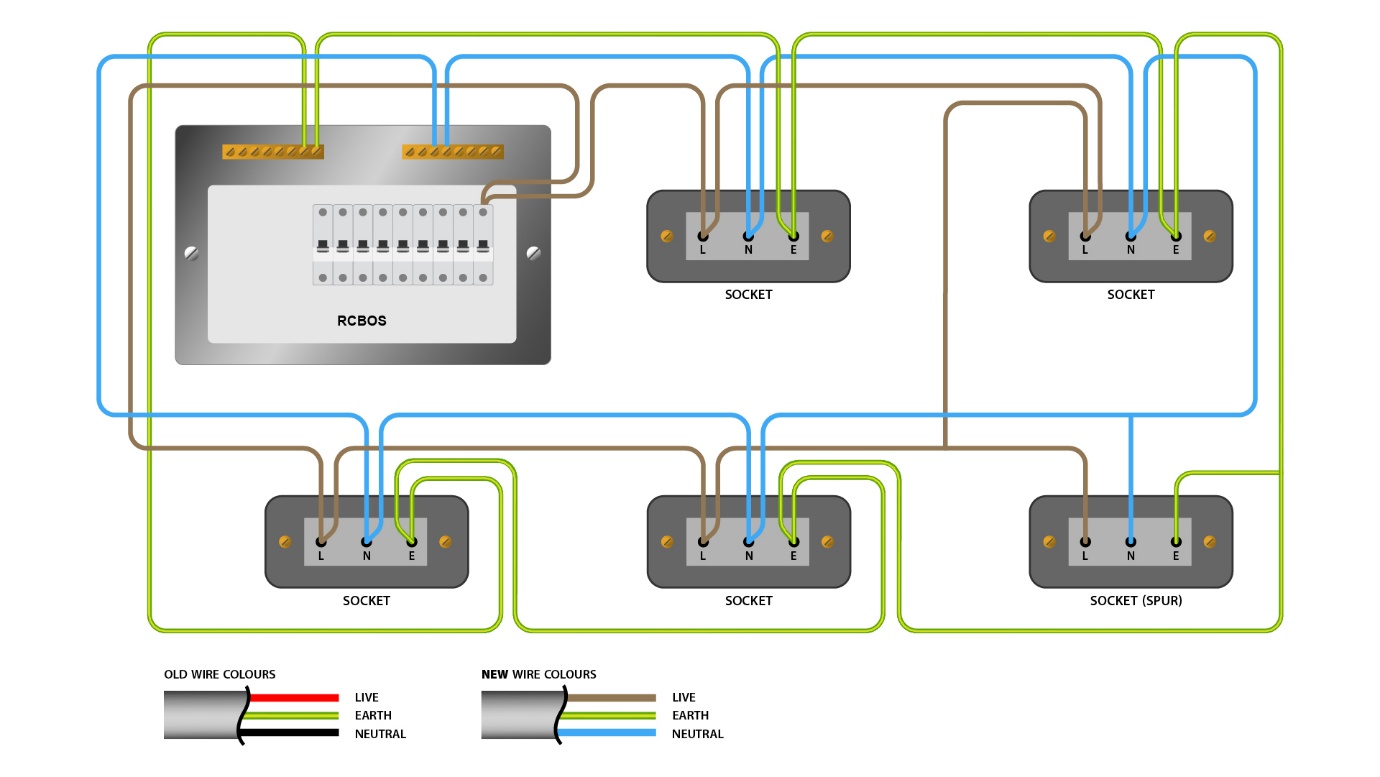
Understanding the function of different wires is essential for any electrical work. Here is a quick guide:
- Live Wire Colour: Carries the electrical load; typically, brown (UK) or black/red (USA).
- Neutral Wire Colour: Provides the return path; typically, blue (UK) or white (USA).
- Earth Wire Colour: Protects against electric shocks by providing the path of least resistance; green/yellow stripes (UK) or green/bare copper (USA).
For older installations, consult wiring colour codes specific to that era to avoid errors.
Back to top9) Wiring Colour Standards and New Installations
New installations must comply with current wiring colour standards. For example:
- A UK socket-outlet wired in a new home will use the brown live wire, blue neutral wire, and green/yellow earth cable.
- Older installations with red and black wires should be upgraded for safety and compliance.
In addition, specific colour codes for high voltage circuits and three-phase wiring systems must be followed to ensure safe operation.
Back to top10) Electrical Appliances and Connected Homes
Modern electrical appliances and connected home systems often rely on colour-coded wiring for easy installation. Adhering to the correct wiring colour standards ensures compatibility and safer use of these devices. In nearly all UK appliance plug tops these days you will find the Brown, Blue and Green / Yellow wiring colours.
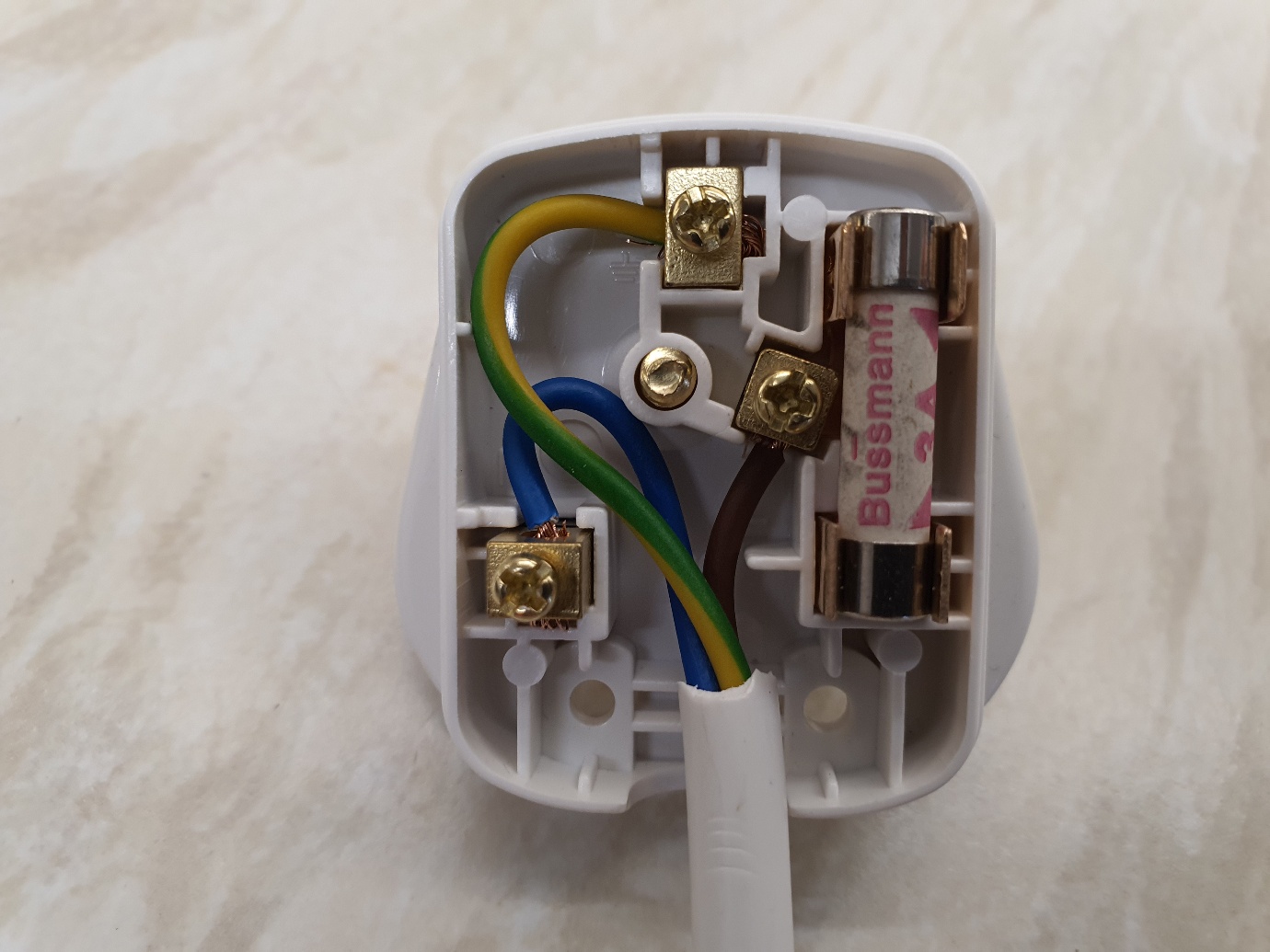
Back to top
11) Significant Risks with Old Wires
Older cables like tough rubber sheathing and Lead Sheathed cables present hazards due to their age and material degradation. Regular visual checks and replacement with modern, PVC-insulated cables can mitigate these risks.
Back to top12) European Cable Colours vs. US Standards
The differences in wiring colour standards between Europe and the USA highlight the need for international awareness among electricians. While European standards promote harmonisation, the USA’s NEC focuses on consistency within its borders. This distinction can impact electrical work on international projects or in multinational settings.
Back to top13) Wiring Systems and Consumer Units
Modern wiring systems rely on consumer units to distribute electricity safely. These units house circuit breakers, RCDs, overcurrent protective devices and other protective devices. Properly identified electrical wire colours ensure that circuits function correctly and safely.
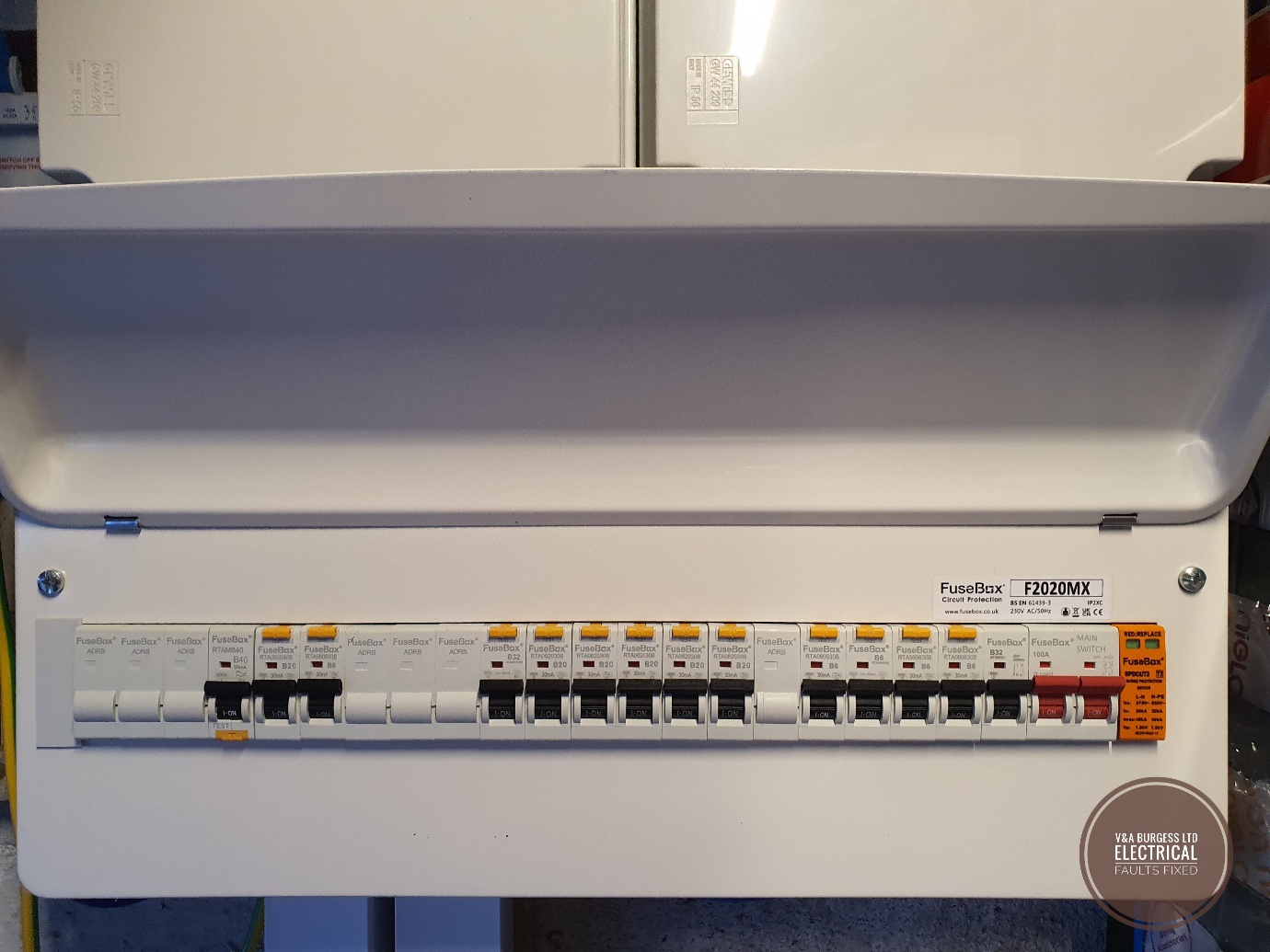
Back to top
14) Conclusion
Knowing the electrical wire colours is essential for anyone involved in electrical work, whether installing a new wiring system, inspecting older installations, or maintaining electrical appliances. By adhering to wiring regulations and staying informed about international standards, we can ensure safer homes, workplaces, and connected environments.
Whether you are an electrician, a homeowner, or someone working in an industrial setting, knowledge of wiring colour codes—old and new—is key to preventing errors and ensuring the reliability of electrical systems. Always consult a qualified professional for electrical work to ensure compliance with the latest standards and best practices.
Back to top
Read more articles
- Log in to post comments


